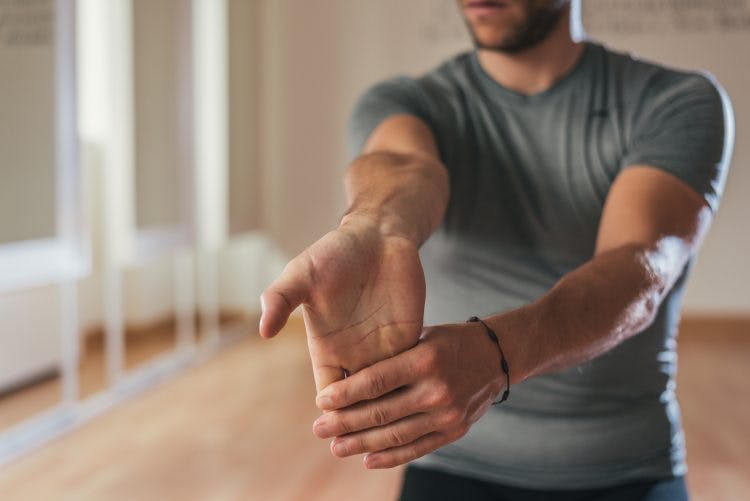Passive Range of Motion Exercises for Stroke Patients to Help Improve Mobility
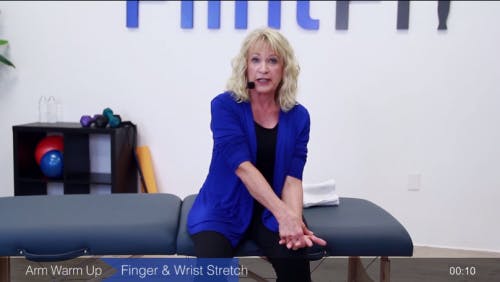
From a seated position, place your hands in your lap. Then, interlace your fingers, and bend your wrist forward, stretching your affected arm palm-side up. You should feel this stretch all the way up your forearm.
Hold this stretch for 20 seconds and release. Then, repeat on the other side.
2. Wrist Stretch
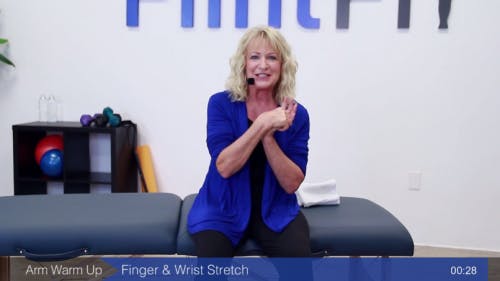
With your fingers still interlaced, gently bend your affected wrist backward and get a nice stretch there.
Hold this stretch for 20 seconds and release. Repeat on the other side.
And remember: never stretch to the point of pain.
3. Cane Stretch
You will need: a cane and a chair.
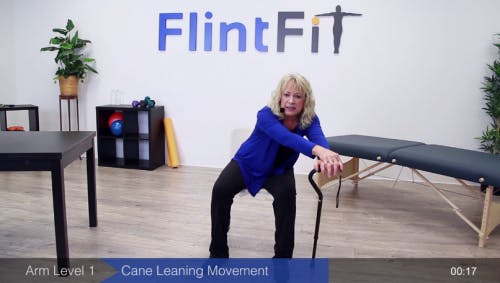
Sit in a chair and place your affected hand on a cane, then place your other hand on top.
With the cane in front of your affected side, lean into the cane and put some of your body weight into your affected side.
Hold for 5 seconds and return to center. Repeat 5 times.
4. Cane Circles
You will need: a cane and a chair.
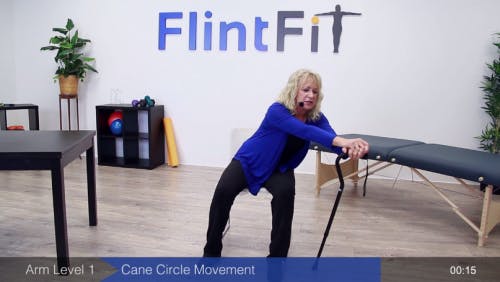
From the same seated position as the Cane Stretch, begin to make large circles with your body, using the cane for balance.
Repeat 5 times in each direction.
5. Cane Outside Stretch
You will need: a cane and a chair.
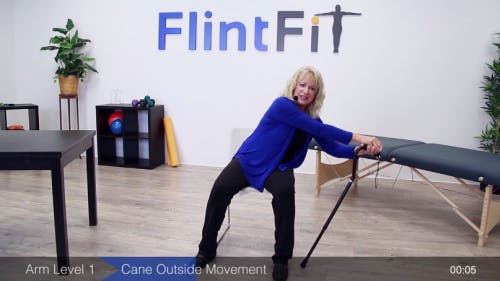
Lastly, use the cane for support as you lean out toward your affected side.
Move slowly and safely to get a good stretch.
6. Cane Reach Movement
You will need: a cane and a chair.
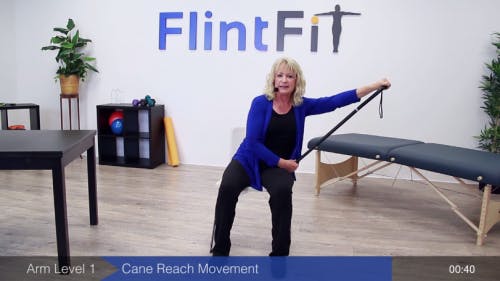
Grasp both ends of a cane and then push your affected arm up towards the ceiling on your affected side.
Feel the stretch as you slowly push your affected arm up into an extended position.
Hold for a few seconds and slowly return to center. Repeat 5 times.
To increase this stretch, slightly turn your head toward your affected side. This will make your body turn that way too and increase the stretch from this exercise.
If you have very stiff arms and can’t reach your arm up very high, just try your best. This stretch will still benefit you.
7. Straight Push Movement
You will need: a table and a water bottle.
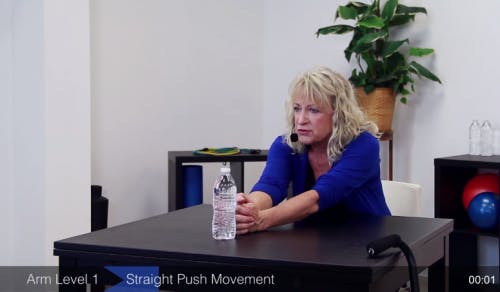
Clasp your hands and place your arms on the table. Then, place a water bottle in front of you as your target.
Then, glide your arms across the table towards the water bottle. If your hands stick to the table, you can place a washcloth underneath them as you move. Stretch as you lean forward and nudge the bottle further away, Then, return to an upright position.
Repeat 5 times and try to stretch a little further each time and nudge the bottle a little more.
8. Circle Movement
You will need: a table and a water bottle.
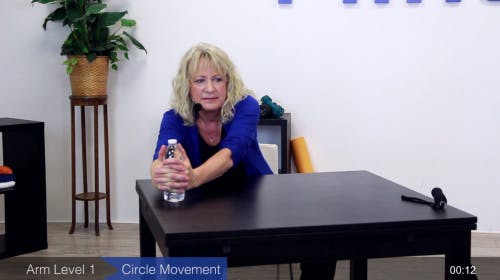
With your hands still clasped around the water bottle, make big circles around the table.
Do a few circles one way, and then do a few the opposite direction.
Benefits of Range of Motion Exercises
There are many benefits of these passive range of motion exercises for stroke patients.
For one, it helps reduce spasticity and muscle stiffness. It also helps increase muscle flexibility and prevent painful contractures. It may also help reduce swelling.
Movement also helps prevent learned nonuse, a phenomenon where your brain completely forgets how to use your affected muscles.
Learned nonuse can easily be prevented by moving your affected muscles a little every day.
Even if you can’t move your muscles yourself, passive exercise helps send signals to your brain to stimulate the connection.
Never Stretch to the Point of Pain!
Before we conclude this article, we’d like to remind you to never stretch to the point of pain.
Stretching until it’s painful is not helpful and can actually cause serious damage. Always stretch safely!
We hope you enjoyed these passive range of motion exercises.

Keep it Going: Get a Free Rehab Exercise Ebook (25 page PDF)

Get our free ebook filled with 25 pages of rehab exercises featuring photos of licensed therapists. Sign up below to get your copy!
When you sign up, you’ll also receive our popular Monday newsletter that contains 5 articles on stroke recovery.
We never sell your email address, and we never spam. That we promise.
